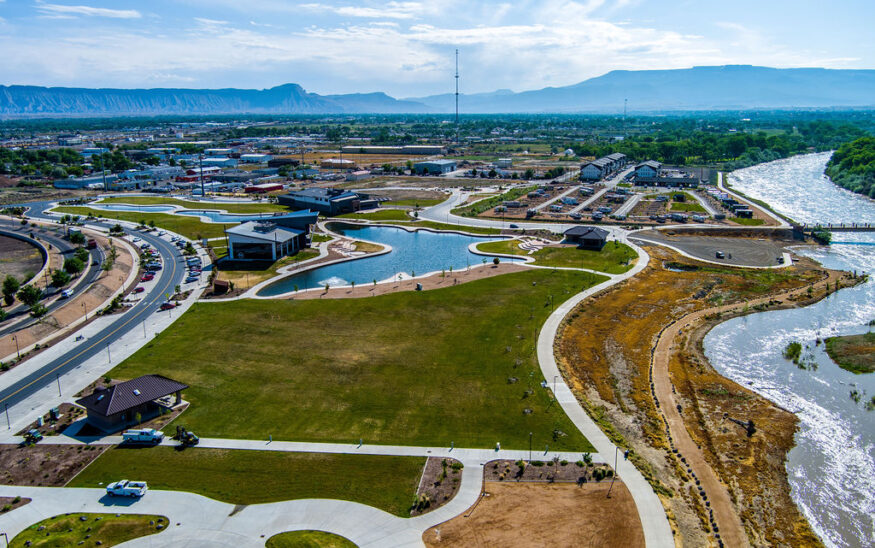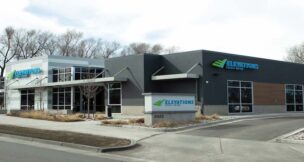Grand Junction’s Opportunity Zones: A Prime Pick for Real Estate Development


Grand Junction’s Opportunity Zones: A Prime Pick for Real Estate Development
In recent years, the Opportunity Zone Program has gained traction among investors seeking to maximize their returns while positively impacting historically underserved communities.
In Colorado, over $1 billion in new investments have flowed into the state over the past five years through Qualified Opportunity Zones (QOZ). These projects have helped fuel housing projects, clean energy projects, business expansions or relocations, public-private infrastructure projects and more as they’ve stimulated local economies and aided in job creation.
The Grand Junction area is home to seven Colorado Opportunity Zones. Its growing economy and strategic location present a promising opportunity for those looking to invest in new real estate projects or relocate their business.
READ: Grand Junction Economic Partnership Unveils Captivating Video Highlighting Opportunity Zones & Riverfront at Las Colonias
What are opportunity zones?
Opportunity Zones are part of a federal tax incentive program established in 2017 as part of the Tax Cuts and Jobs Act. This program aims to incentivize investments in designated areas by offering tax benefits to investors through deferral and elimination of state and federal capital gains taxes.
This program aids in spurring economic growth and job creation in historically lower-income communities while providing tax benefits to investors. Investors can defer tax on any prior eligible gain to the extent that a corresponding amount is invested in a Qualified Opportunity Fund (QOF). The last day that investors can realize a capital gain that can be put into a QOF is December 31, 2026, but investors can hold an OZ investment as long as 2046 to realize its full 10+ year benefit, which is an elimination of capital gains tax on the appreciation of the OZ investment itself.
As annual inflation rates climb throughout the country, many investors continue to utilize QOZs due to their associated tax benefits and ability to impact communities positively.
Real estate development opportunities in Grand Junction
While the Grand Junction area and Mesa County have been seen as historically distressed communities, the region has experienced tremendous growth and new momentum over the past few years through an influx of new investment. The region has seen increased housing developments and businesses operating in emerging industries, including advanced manufacturing, technology and outdoor recreation.
READ: Remote Workers: 5 Reasons to Move to Grand Junction
Many new investments entering the region have come from the Opportunity Zone perspective, with residential and commercial real estate development being one of the region’s most promising areas. The city and private investors have invested heavily in revitalizing the downtown area. Several ongoing projects spanning the public and private sectors include renovating historic buildings, constructing new mixed-use developments, housing projects, and expanding public spaces.
Opportunities at the Riverfront at Las Colonias
Among the most notable properties ready for investment within a Qualified Opportunity Zone is the Riverfront at Las Colonias. Located minutes from Downtown Grand Junction, the Riverfront at Las Colonias includes a 140-acre mixed-use park with a 15-acre business park along the Colorado River.
The Riverfront at Las Colonias includes seven shovel-ready pad sites and is the ideal location for businesses operating in the outdoor industry, light manufacturing or technology sectors. The business park was designed with a focus on wellness, community and outdoor access with attractive amenities nearby, including a 4,000-person capacity amphitheater, a botanical garden, a river park and a zip line.
This unique location is surrounded by public parks and a paved path that leads to world-class mountain biking trails. Additional properties in Grand Junction’s Opportunity Zones are located mainly near Downtown Grand Junction, Powderhorn Mountain Resort and the Grand Mesa.
Affordability, accessibility, and quality of life
Beyond the region’s opportunities for investment, many businesses choose to relocate or expand into the region due to its accessibility and affordability. The Grand Junction area, including Fruita and Palisade, is the largest metropolitan region between major cities like Denver and Salt Lake City. The region also includes direct access to I-70 and a regional airport, making it an ideal location for businesses to reach major markets on the east coast and operate globally.
Western Colorado is an emerging outdoor recreation and innovation hub with over 245 sunny days per year. The region also boasts a lower cost of living when compared to major cities, including Denver, Boulder, and Salt Lake City. The median annual home price in Grand Junction is 68% lower than the median home price in Denver, and the overall cost of living is 33% lower, resulting in employees and families that are healthier and happier.
Grand Junction’s business incentives and resources
For businesses considering relocation or expansion into the region, Mesa County and the Grand Junction area offer a location conducive to growth and connectivity.
Grand Junction is home to one of the nation’s fastest-growing universities, Colorado Mesa University, which offers a robust talent pipeline for companies operating in major industries, including advanced manufacturing, healthcare, technology, agriculture and more. Additionally, Mesa County is Colorado’s only certified ACT Work Ready Community. This means that the region has the talent needed to help businesses grow and thrive.
Beyond benefits offered through Opportunity Zones, businesses may be eligible for incentives, including the Rural Jump Start Program (RJS), which allows for lucrative tax benefits and cash grants for eligible businesses, and the Enterprise Zone, which allows for tax credits for hiring new employees, providing employees with health insurance or on the job training, obtaining a new business facility and purchasing new equipment.
The Grand Junction area and its neighboring communities, Fruita and Palisade, are promising areas for investors looking to tap into a growing market. The region offers a range of investment opportunities, including commercial real estate development, small business investment and infrastructure projects.
Organizations like the Grand Junction Economic Partnership and our network are available to help assist businesses through the process of their relocation, expansion or real estate development project, including assistance with site selection, incentives and connections to local networks.
To learn more about available commercial real estate opportunities, incentives, and workforce development in Mesa County and the Grand Junction area, please visit gjep.org/opportunity.
Curtis Englehart is the Executive Director of the Grand Junction Economic Partnership, leading the organization in recruitment and expansion efforts. Originally from Delta, Curtis attended Colorado Mesa University to play baseball, leading to a career full of service, purpose, and strategic development. With over ten years of local experience creating strong community partnerships at the senior leadership level. Curtis was previously the Director of the Mesa County Workforce Center where he led an organization that focused on connecting local talent to local employers and spearheading strategic workforce programs in the region geared towards primary jobs. Curtis was also the driving force behind the Work Ready Community Initiative in Mesa County. Currently, Mesa County is the only Certified Work Ready Community in Colorado, which gives us the tools to objectively map and inventory the skill level of our regional workforce. Curtis took the reigns as GJEP’s Executive Director in August of 2022 and will focus heavily on business recruitment and expansion, primary job creation, and community development initiatives.













